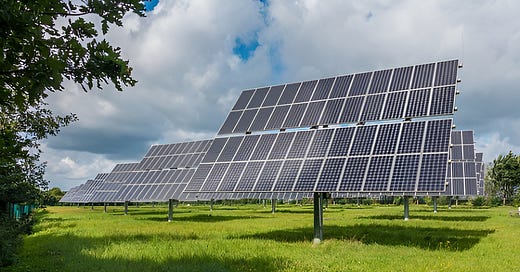Renewable Energy Stocks: Powering Your Portfolio's Future
Investments have quickly evolved from an involvement in green energy with several renewable energy stocks to having some or most renewable energy stocks as a substantial pillar in a considerably diversified portfolio. Pressing environmental issues, revolutionary technologies, and ever-more favorable government policies have come together to create what is indeed a very strong tailwind for the clean energy sector.
Investing in renewable energy stocks is just about investing in a greener future, but it also offers good potential for capital appreciation in the long run. This will analyze why there are multiple good reasons for including renewable energy stocks in serious consideration by investors who want to grow and have a positive impact.
Renewable Energy Stocks: Expanding and Compelling Argument
Of course, the main push behind renewables is the need to decarbonize the world economy to lessen damage from climate change. Almost all governments around the world are coming up with ever-bolder targets for how much emissions their countries will reduce. These have generally translated into huge investments alongside regulatory frameworks to favour the deployment of renewable energies.
As the analysis of the Economics of Solar Power shows, the reduced levelized cost of energy (LCOE) for solar and the other renewables has made them as economical if not increasingly so preferable as fossil fuels. But the competitions are not restricted to solar. Wind, geothermal, and hydropower are also recording similar trends, and all have been increasingly more favorable investments regarding renewables.
There has been continuous improvement in battery storage technology to address intermittency issues associated with solar and wind power so that they can be enhanced in terms of grid reliability.
A Broad Look at the Renewable Energy Universe
The universe of renewable energy is vast, and it consists of numerous investable options. Some include companies that manufacture the main components from which solar panels, wind turbines, and electrolyzers for green hydrogen production are made. Besides, another niche area is purely project development and operation-creation-ownership-operation of renewable power plants.
The energy storage sector, which includes battery manufacturers and grid-scale solutions, is fiercely competitive and rapidly growing. All technologies and services that make it possible for smart grid solutions and energy management systems to be part of the broader infrastructure powering mass adoption of renewable sources add to the possibility of investing in this area.
Thus, a more profound understanding of dynamics and growth drivers surrounding these sub-sectors would become imperative for investment. The International Renewable Energy Agency (IRENA), as a comprehensive resource exploring these global trends and emerging techno-economic processes within the renewable energy sector, would be the most appropriate agency in such endeavors.
Unlocking Exceeding Returns While Hedging the Major Considerations
The global energy transition entails investments running into billions, coupled with the trillions of dollars that have to be invested in return opportunities on renewable stocks. The ongoing electrification of the world leads to future clean energy, while the most successful holders in this field are bound to show very rewarding revenue and earnings growth.
Such high valuations are often met with investments in companies that reflect good environmental performance because investments are also migrating with rising interest to environmental, social, and governance matters. However, a good investor will always keep their ears and eyes open to inevitable headwinds. For example, as technology advances, new energy-efficient solutions can be developed at a cheaper cost.
Some risks, specifically for the execution of large-scale infrastructure projects, are associated with changing government policies, which affect investment outcomes. In achieving this, due diligence should be carefully practiced, coupled with thorough insight or understanding of competitors, and preferably a longer investment duration.
Strategic Methods of Building a Resilient Portfolio
This constitutes the basic construction method for constructing such a flexible portfolio to-be-renewable-stocks-portfolios-not-watch; portfolio diversification. Exposure to diversified holdings can be gained by, say, investing in small internal companies in individual subsectors or in very specialized renewable energy ETFs that at least have some broader market footprint.
In a way, geographical diversification helps in the offsetting of specific market and regulatory risks associated with certain countries, thereby spreading risks proportionately with risk tolerance and investment objectives; one could then effectively decide on renewable energy stocks with the implementation of technological leadership, sound financials, management expertise, and track records.
Most renewable energy stocks are currently on an upward movement; thus, a wise investor will now psyche himself for short-term volatility that may be well deserved, settling with the thought of perhaps longer horizons to reap the greatest rewards from arguably transformational potential in the sector.
The trend of investments in renewable energy stocks is ever-growing and firmly backed by some very good global trends. Transitioning to cleaner energy systems is, as an environmental rationale, but equally, one of the greatest economic opportunities.
Having learned about the different branches of renewable energy and their associated risks and rewards with respect to investment in them, a highly diversified and long-term investment perspective can enable actual investment holders to establish his or her portfolio advantageously towards this transformation and toward a more sustainable future.





